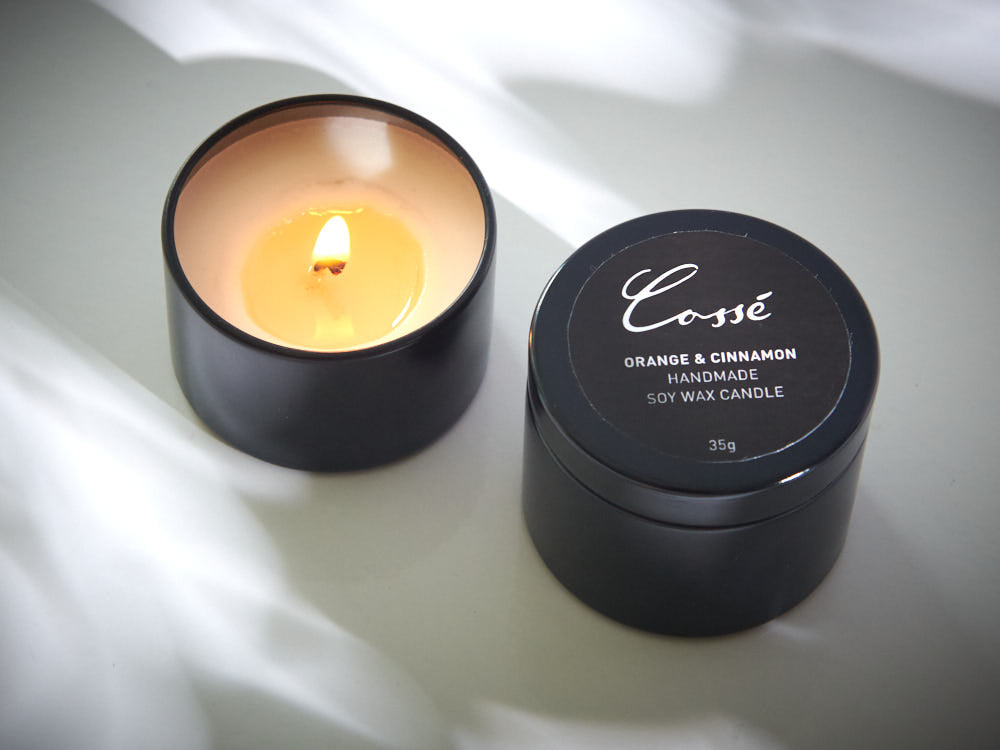From Wick to Wax: Comprehending the Chemistry Behind Soy Wax Candles and Their Ecological Impact
As we illuminate our areas with the warm radiance of candle lights, there exists a realm of intricate chemistry behind the relatively basic act of lighting a soy wax candle. The choice in between soy and paraffin wax extends beyond plain looks, delving right into the realm of environmental impact and the very composition of the products. Understanding the molecular structure of soy wax and its burning process sheds light on the exhausts released into our environments. Join us as we unwind the scientific details behind soy wax candle lights and explore their ramifications on our atmosphere.
Soy Wax Vs. Paraffin Wax
When contrasting soy wax and paraffin wax for candle making, it is necessary to comprehend the distinctive characteristics and advantages of each material. Soy wax is a natural, renewable energy stemmed from soybean oil, making it environment-friendly and eco-friendly - home fragrance. On the other hand, paraffin wax is a byproduct of oil refining, which increases problems about its environmental effect and sustainability
Soy wax candle lights shed cleaner and produce less residue compared to paraffin wax candle lights, making them a healthier choice for interior air top quality. Additionally, soy wax has a lower melting point, enabling a longer-lasting candle light that distributes scent a lot more successfully. Paraffin wax, on the other hand, tends to melt faster and much less easily, possibly launching unsafe chemicals into the air.
From a sustainability point of view, soy wax is preferred for its biodegradability and renewable sourcing, lining up with the expanding customer preference for environmentally conscious items. While paraffin wax has been a standard choice in candle making due to its cost and ease of usage, the change in the direction of eco-friendly choices like soy wax is acquiring momentum in the market.
Chemical Composition of Soy Wax

Combustion Refine in Soy Candles
The chemical structure of soy wax straight affects the burning procedure in soy candle lights, influencing elements such as melt time, aroma launch, and environmental effect. When a soy candle is lit, the warmth from the fire melts the wax near the wick. This liquid wax is after that created the wick because of capillary action. As the liquid wax gets to the flame, it goes through and vaporizes burning. The combustion check over here procedure includes the vaporized hydrocarbons in the wax reacting with oxygen airborne to create heat, light, water vapor, and co2.
The combustion effectiveness of soy candles is influenced by the purity of the soy wax and the quality of the wick. A clean-burning soy candle with an appropriately sized wick will certainly minimize and create a steady fire residue formation. This not just extends the melt time of the candle yet likewise enhances the launch of fragrances. Additionally, soy wax candle lights have a lower ecological effect contrasted to paraffin candles as a result of their renewable and naturally degradable nature.

Ecological Benefits of Soy Wax

Taken into consideration a lasting alternative to standard paraffin wax, soy wax uses significant ecological benefits that make it a popular choice amongst eco-conscious customers. One considerable advantage of soy wax is its sustainable sourcing. Soy wax is originated from soybean oil, which is primarily cultivated in the United States. The farming of soybeans aids sustain local farmers and minimizes the dependence on non-renewable fossil fuels used in paraffin wax manufacturing. In addition, soy wax is biodegradable, meaning it breaks down naturally without releasing hazardous toxic substances into the setting. This particular makes soy wax candles a more eco pleasant option compared to paraffin wax candle lights, which are made from oil, a non-renewable resource. Additionally, soy wax burns cleaner and generates much less residue than paraffin wax, contributing to far better indoor air quality and minimizing the need for cleaning and upkeep. Generally, the environmental benefits of soy wax align with the expanding need for sustainable and environmentally friendly items in the marketplace.
Recycling and Disposal Factors To Consider
Reusing and proper disposal of soy wax candle lights play a vital duty in keeping ecological sustainability and minimizing waste in houses and communities. The initial action is to ensure that the candle has burned completely when it comes to recycling soy wax candles. This can be accomplished by enabling the candle light to melt until the wick is no more useful, and after that letting the continuing to be wax cool and solidify. When the wax has actually solidified, it can be carefully eliminated from the container.

In regards to disposal, if recycling is not a choice, soy wax candles are biodegradable and can be safely dealt with in most household waste systems. It is always recommended to inspect with local reusing facilities or waste management services for specific standards on candle light disposal to make sure proper handling and ecological protection.
Verdict
In verdict, the chemistry behind soy wax candles exposes their ecological advantages over paraffin wax candles. Soy wax, derived from soybean oil, burns cleaner and creates much less residue when compared to paraffin wax.
When contrasting soy wax and paraffin wax for candle light production, it is crucial to understand the unique features and benefits of each material (candles).Soy wax candles shed cleaner and send out less soot compared to paraffin wax candle lights, making them a much healthier selection for indoor air high quality.Considered a sustainable choice to traditional paraffin wax, soy wax uses notable environmental advantages that make it a preferred choice amongst eco-conscious consumers. Soy wax burns cleaner and produces much less residue than paraffin wax, adding to better interior air quality and reducing the requirement home for cleansing and Learn More Here maintenance.In final thought, the chemistry behind soy wax candle lights discloses their ecological benefits over paraffin wax candle lights